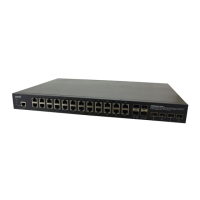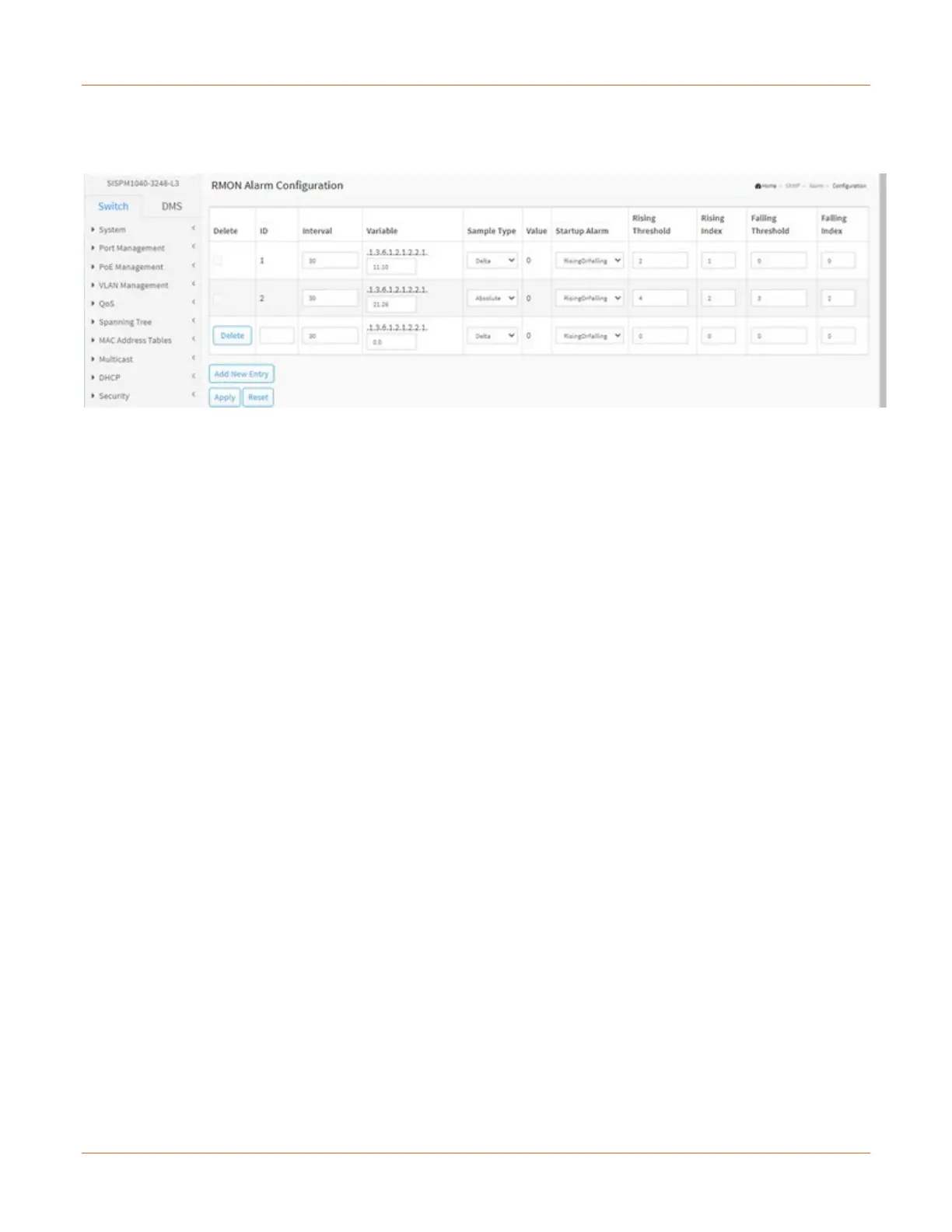Lantronix SISPM1040-xxxx-L3 Web User Guide
33856 Rev. A https://www.lantronix.com/ 281
SNMP > Alarm > Configuration
Configure RMON Alarm table on this page. The entry index key is ID.
Delete: Check to delete the entry. It will be deleted during the next save.
ID: Indicates the index of the entry. The range is from 1 to 65535.
Interval: Indicates the interval in seconds for sampling and comparing the rising and falling threshold. The range
is from 1 to 2^31-1.
Variable: Indicates the particular variable to be sampled, the possible variables are:
InOctets: The total number of octets received on the interface, including framing characters.
InUcastPkts: The number of uni-cast packets delivered to a higher-layer protocol.
InNUcastPkts: The number of broad-cast and multi-cast packets delivered to a higher-layer protocol.
InDiscards: The number of inbound packets that are discarded even the packets are normal.
InErrors: The number of inbound packets that contained errors preventing them from being deliverable to
a higher-layer protocol.
InUnknownProtos: the number of the inbound packets that were discarded because of the unknown or
un-support protocol.
OutOctets: The number of octets transmitted out of the interface, including framing characters.
OutUcastPkts: The number of uni-cast packets that request to transmit.
OutNUcastPkts: The number of broad-cast and multi-cast packets that request to transmit.
OutDiscards: The number of outbound packets that are discarded event the packets is normal.
OutErrors: The number of outbound packets that could not be transmitted because of errors.
OutQLen: The length of the output packet queue (in packets).
Sample Type: The method of sampling the selected variable and calculating the value to be compared against
the thresholds, possible sample types are:
Absolute: Get the sample directly.
Delta: Calculate the difference between samples (default).
Value: The value of the statistic during the last sampling period.
Startup Alarm: The method of sampling the selected variable and calculating the value to be compared against
the thresholds, possible sample types are:
RisingTrigger alarm when the first value is larger than the rising threshold.
FallingTrigger alarm when the first value is less than the falling threshold.
RisingOrFallingTrigger alarm when the first value is larger than the rising threshold or less than the
falling threshold (default).

